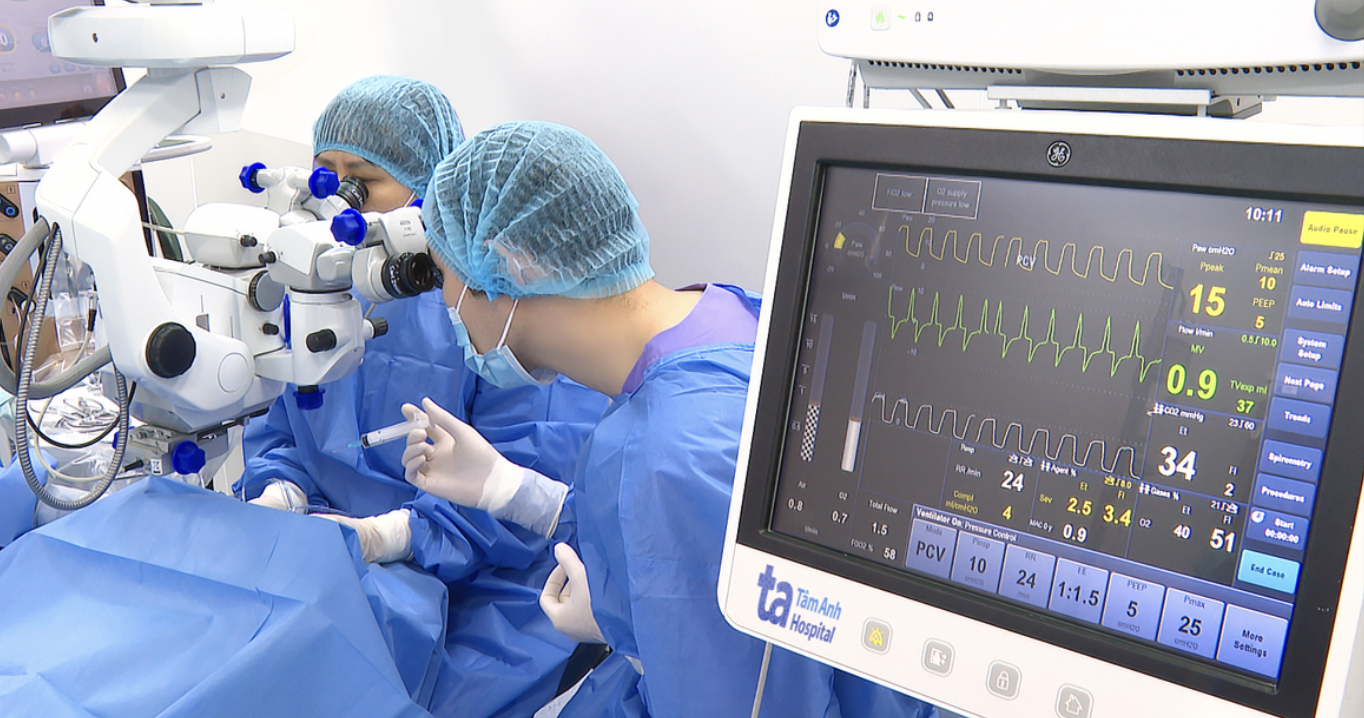Congenital cataracts are a common cause of blindness in children, according to Dr. Bui Viet Hung, Head of the Vitreoretinal Department at the High-Tech Eye Center, Tam Anh General Hospital. If not detected and treated early, light cannot pass through the lens to stimulate the retina. This prevents the brain from developing vision, leading to complications such as amblyopia (lazy eye), nystagmus (eye fluttering), and vision loss. The cloudy lens must be removed as early as possible, ideally before 17 weeks of age, to ensure optimal vision development.
"Treating congenital cataracts is a race against time," Dr. Hung said. Surgery before 3 months of age significantly increases the chances of near-normal vision development.
A multidisciplinary team of doctors decided to operate on the 2-month-old girl to preserve her vision. The team conducted a thorough eye exam, including retinal imaging, handheld refraction measurements, and specialized tests, to assess her eyes and develop a detailed surgical plan.
Unlike cataract surgery in adults, which typically addresses one eye at a time, the baby underwent simultaneous surgery on both eyes to minimize anesthesia exposure. Her eyes were only one-third the size of an adult's, doubling the risk of complications. To mitigate this, Dr. Hung and Prof. Dr. Nguyen Thi Thu Hien, Head of the Refractive Department, used specialized microsurgical equipment to remove the cloudy lenses without damaging other eye structures. They then implanted artificial lenses.
Post-surgery, the baby underwent vision rehabilitation. Now 8 months old, she can recognize objects, follow her relatives with her eyes, and respond to her surroundings.
 |
Dr. Hung and Prof. Dr. Hien perform congenital cataract surgery on the 2-month-old girl. Photo: Tam Anh General Hospital |
Dr. Hung and Prof. Dr. Hien perform congenital cataract surgery on the 2-month-old girl. Photo: Tam Anh General Hospital
Congenital cataracts can be caused by genetic factors, pregnancy complications, fetal infections, or metabolic disorders. If either parent has a history of cataracts, the child is at higher risk and should be examined soon after birth.
Dr. Hung advises parents to observe their children's eyes from the first days of life. If any abnormalities are noticed, such as white spots in the eyes, cloudy pupils, eye fluttering, crossed eyes, or lack of response to light, prompt medical attention is crucial. After congenital cataract surgery, regular follow-up appointments are essential for vision checks, eyeglass adjustments, and vision rehabilitation. Long-term monitoring helps detect amblyopia or complications like glaucoma and posterior capsule opacification, allowing for timely intervention.
Khue Lam
| Readers can submit questions about eye diseases here for doctors to answer. |












